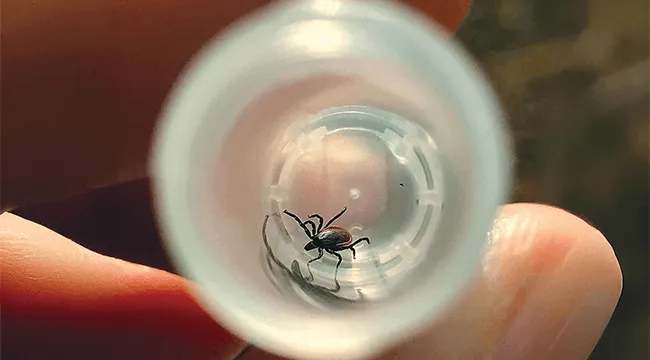Lyme disease is caused by spirochetes of the Borrelia burgdorferi bacteria and has been present in North America for over 60,000 years. Since the 1960s, blacklegged ticks (and the pathogens they carry) have migrated northward from pockets in the Southeast and along the eastern seaboard. Climate change has worsened the problem, allowing tick populations to overwinter, migrate, and thrive in new regions.
Lyme cases have ballooned since the Centers for Disease Control and Prevention began national surveillance of the disease in 1991, and so has public interest in a potential vaccine.
Last fall, the University of Vermont’s Vaccine Testing Center (VTC) was inundated with inquiries from people hoping to participate in a phase three trial of a Lyme vaccine developed by Pfizer. There are 9,400 participants enrolled in sites across North America and northern Europe, including 232 individuals in UVM’s arm of the study, which is overseen by Kristen Pierce, M.D.’03, principal investigator and faculty director at the VTC, professor of medicine and microbiology & molecular genetics, and vice-chair for academic affairs in the Larner Department of Medicine’s Division of Infectious Disease. The trial tests the vaccine’s efficacy and involves a series of three shots followed by a booster. The UVM arm of the Lyme study closes in December, after which data analysis can begin to determine its efficacy. However, bringing the vaccine to market requires FDA approval, which can take months—and often years.
Other UVM researchers are investigating equally pressing tick questions, such as how ticks, their hosts, and their pathogens are influenced by environmental factors, and the efficacy of using entomopathogenic fungi—fungus that cause disease in insects and other arthropods, like mites and ticks, producing spores that germinate and penetrate arthropod exoskeletons and slowly kill the ticks from the inside—as biological control measures.
